#species reintroduction
Text
As usual, the main barrier to species reintroduction and ecosystem restoration are animal farmers. In this case, sheep farmers who value their own profit over the environment, and whose livestock have reduced vast swathes of the UK to ecologically dead wastelands.
So many people still think that wool production is some sort of innocuous haircut from dear old local country farmers. You all need to take a proper look into who the organisations like the National Farmers Union actually are, whose interests they represent, and what they do with your money.
40 notes
·
View notes
Text
Lynx reintroduction in need of public support: the National Trust is restoring parts of Northumberland that could support a lynx population.
Wild lynx have been extinct in the UK for 1,300 years due to hunting and habitat destruction.
In an effort to rewild and rejuvenate the land, a family of beavers were reintroduced in 2023. Europe has had success with reintroducing both species.
Anyone who lives near should go to these exhibitions and voice their public support! It's such an amazing opportunity ❤
"We've lost so much wildlife, and the jigsaw of life is really quite broken, so bringing back species like beaver and lynx could really help restore nature," Mr Pratt, of Northumberland Wildlife Trust.
"The lynx has been successfully reintroduced in countries like Germany, Switzerland, France, Italy and Slovenia."
"Lynx were once widespread in the UK but disappeared in medieval times because they were hunted for their fur."
It's literally called The Missing Lynx Project !!!! 😻😻😻😻😻😻😻
#Lynx#Missing Lynx Project#The Missing Lynx Project#Wildlife#Nature restoration#Earth day#Love#Northumberland#Cumbria#Scotland#Beaver#Wildlife trust#National Trust#UK#Britain#Important#Earth#Nature#Species reintroduction#Please share#Northumberland Wildlife Trust#Cats#Cat#Big cats#Wild Cat#Wild Cats#Kitty#big kitty#happy kitty#kitty cat
19 notes
·
View notes
Text
Angela Sondenaa was jet-boating up the Snake River through Hells Canyon. Looking at the steep cliffs and rocky crags, an idea struck her: “Man, there needs to be condors here,” she recalls thinking.
It was 2015 and Sondenaa—the Nez Perce Tribe’s Precious Lands Wildlife Area project leader—was surveying for bighorn sheep.
She’d never considered the idea of bringing condors back to the Columbia River Basin, but once it hit her, she says, “This idea would not leave me.”
Sondenaa pitched her idea to the tribe’s wildlife director, and they submitted a grant proposal to the U.S. Fish and Wildlife Service to conduct a condor viability assessment in the Snake River Basin.
Winning the grant in 2016 put the Nez Perce Tribe—or Nimíipuu—on a path that could lead to the first reintroduction of condors north of California since they disappeared from this region about 160 years ago.
If all continues to go well, the tribe will release their first group of captive-raised birds in a yet-to-be-determined location within five to seven years.
#california condor#rewilding#species reintroduction#ecological restoration#ecology#endangered species#wildlife conservation#pacific northwest
21 notes
·
View notes
Text
Beaver reintroduction guy at it again!
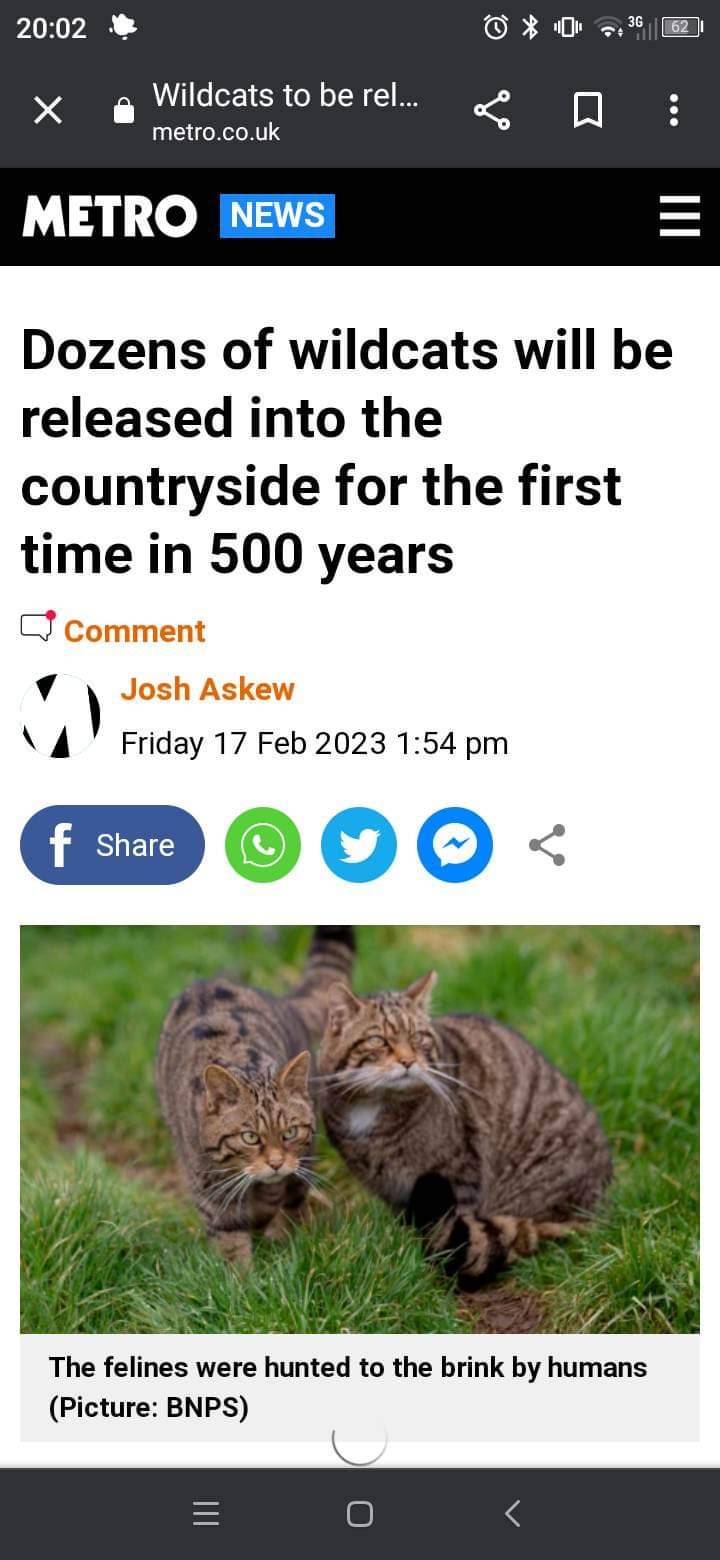
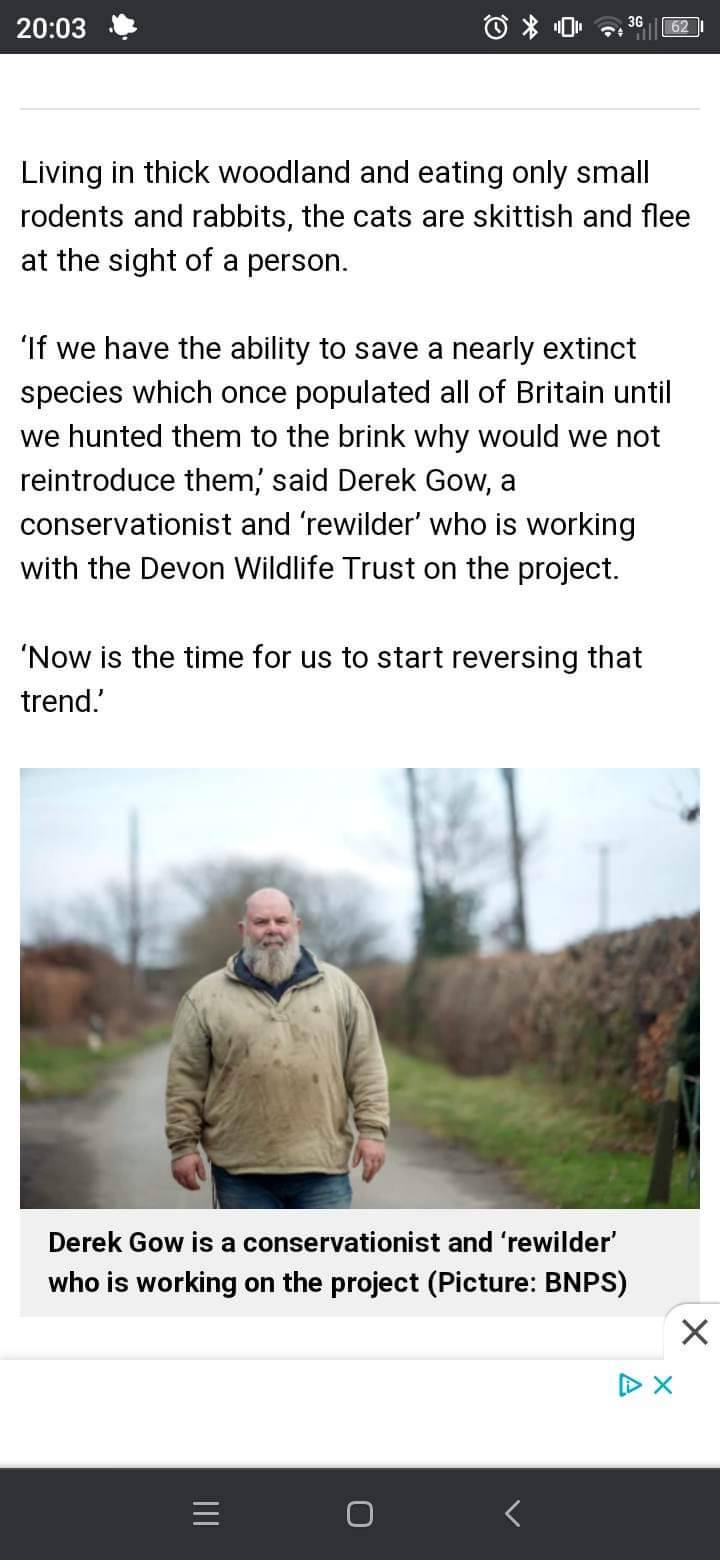
2 notes
·
View notes
Text
Loss and Reintroduction of Beavers
Some explanation of the importance of beavers and how reintroduction is going in Eurasia.
Beavers
In North America, beavers are a keystone species. They influence the movement of rivers, and thus, impact many other species in biological communities. They provide food to species they are prey of, and change the landscape with their own eating habits.
The dams they create increase sizes of ponds and can become wetlands - increasing the habitat space for other species. This also increases biodiversity by allowing plants that thrive in flooded areas to emerge while reducing flood risks by holding back large build-ups of water1. Additionally, dams are important filters for downstream water. Water run-off from urban and agricultural areas often carry harmful amounts of sediment, nitrogen, and phosphorus, which are primary sources of algal blooms - an occurrence that often results in a lot of fish dying. Beaver dams help filter these excess nutrients from going downstream, making it cleaner2.
The functions of dams could be done by human intervention and innovation, and in many places are, but beavers are completely content to create and maintain dams, why not let them? They are useful aside from dams, anyway, as they also serve the important role as a herbivore and a prey animal for other species.
Gone from Eurasia
For centuries, beavers have been highly important to humans, as well. The Eurasian beaver, also called the European beaver, was hunted extensively for its fur, meat, and castoreum, which is used in fragrances and food. They became extinct in England, Wales, and Scotland by the 1500s3. By 1900, the population was about 1,200 individuals in Europe.
These losses resulted in biodiversity and habitat quality loss for Eurasian countries. Multiple studies have reported on lower plant diversity, increases in dominant plant species foliage cover, lower invertebrate diversity, and many other impacts as a result of the absence of beavers4. Many studies, however, specifically reflect on the impact of beaver loss in the context of reintroduction.
Reintroduction
The Eurasian beaver now has an estimated population of 1.2 million5. The IUCN Red List last assessed it in 2016 and it is in the “Least Concern” category6.
Eurasian beaver reintroduction has taken place in many countries to varying degrees, including France, Finland, Germany, Latvia, Lithuania, and Poland7. Many countries, like France and Poland, faced issues relating to a lack of coordination with other official parties and establishing procedures to ensure the success of the reintroduced animals7. In other places such as Latvia and the Netherlands, reintroduction faced issues associated with human activity, like damage to crops and drainage canals7. These down sides are more of a result of continual habitat loss for wild species as opposed to a problem with the animals themselves.
The benefits of reintroduction have been extensive. In places like Scotland, reduced downstream levels of phosphorus and nitrogen because of dams have been observed, as well as the presence of organisms indicative of enriched conditions9.
In Britain, reintroduction trials have resulted in increased biodiversity in plant and animal species, and more diverse landscapes that support different wildlife and human activities11.
There are also some unintended benefits of beaver reintroduction. A study in Sweden reflects on the unexpected irruption of the beaver population, which is usually expected to not occur because the species faces the same aboriginal factors that regulated their numbers before extinction8. Witnessing the irruption of the Sweden beaver populations led researchers to more closely assess the relevant environmental factors and theorize that wolves might be the missing aboriginal factor that would have limited the beaver population8. Reintroducing and monitoring beavers in Sweden raised further awareness and knowledge about how the environment might have been kept in check before human alteration. It lifted new questions and information that can be used in further research and theorizing.
Tourism is another factor not as frequently considered with beaver reintroduction. Wildlife tourism can be a dissenting topic because of its history of environmental damage and intrusion in ecosystems. But more recent research has enabled it to become less intrusive and able to help people learn about the environment without harming it. In Great Britain, one study found tourism to see a reintroduced population of beavers has been economically beneficial to the local community10. Many people now actively seek out positive experiences with the environment, especially when it involves cute rodents. Fortunately, this provides more reason for environmental initiatives to protect and improve the ecosystems around us.
Reintroduction takes decades if not centuries. After hundreds of years without a major species, ecosystems need time to readjust. Additionally, animal species cannot be simply classified as ‘good’ or ‘bad’. They can be invasive in some places, and even in their endemic habitat might sometimes be deleterious. The spread of human influence and activity complicates the relationship that beavers have with their environment. But data and current experiences indicate that beavers are ultimately crucial to many ecosystems. We will likely continue to see these benefits as environments readjust.
Additional Resources
1.https://parks.canada.ca/pn-np/mb/riding/nature/animals/mammals/castors-beavers
2. Habitat Engineering by Beavers
3. https://ptes.org/get-informed/facts-figures/eurasian-beaver/
4.https://www.martinezbeavers.org/wp-content/uploads/2018/01/Stringer-Gaywood-2016-The-impact-of-beavers-on-biodiversity-and-the-ecological-basis-for-their-reintroduction-to-Scotland-Mamm-Rev-DOI-10.1111-mam.12068.pdf
5.https://scottishwildlifetrust.org.uk/species/beaver/#:~:text=By%20the%2016th%20Century%2C%20the,to%20number%20around%201.2%20million.
6. https://www.iucnredlist.org/species/4007/197499749
7.https://www.researchgate.net/profile/Fran-Tattersall/publication/229639593_Reintroducing_the_European_Beaver_to_Britain_nostalgic_meddling_or_restoring_biodiversity/links/602fda36a6fdcc37a8382690/Reintroducing-the-European-Beaver-to-Britain-nostalgic-meddling-or-restoring-biodiversity.pdf
8. https://www.jstor.org/stable/pdf/2386513.pdf
9. https://onlinelibrary.wiley.com/doi/abs/10.1111/fwb.12721
10. https://www.sciencedirect.com/science/article/pii/S1617138120301667
11. https://ecopsychology-journal.eu/v7/EJE%20v7_Gandy_and_Watts.pdf
#beavers#European beaver#eurasian beaver#article#research#environment#species extinction#species reintroduction#nature
1 note
·
View note
Note
They just released the first 8 Spix's macaws back to their native range in Brazil after 22 years of them being gone from the wild, if you want to look into it!
Thanks so much for sending this in and giving be an excuse to gush about it!
Honestly I think the heart of this conservation story can be summed up by the very first line of the article:
"The Spix’s little blue macaw — extinct in the wild for 22 years — now flies free again in its natural habitat in Brazil, thanks to decades of research and effort by hundreds of scientists, conservation biologists, veterinarians, aviculturists and indigenous peoples."
So many people from so many different backgrounds cared enough to invest their time, money, and knowledge--often with no or very little financial compensation--to bring these birds home. Many whose names and contributions we will never know.
Eight birds were released earlier in June and 12 more are set to be released in December. This is only the beginning of the reintroduction phase of a captive breeding and reintroduction plan that has been in the making for decades. Parrots are challenging animals to reintroduce to the wild because they are so intelligent and social, but conservationists have learned a lot from both failed and successful parrot reintroductions in the past. I'm wishing all the luck in the world to those first eight birds--they have been given the best shot possible at making it in the wild.
This is one of those conservation stories that makes it all worth it. After 22 years, there will finally be little blue parrots in the Brazilian forest again.

(For those who are wondering, yes, this is what the movie Rio was based on. Rio brought an immense amount of attention and support to the Spix's macaw reintroduction efforts)
#bird conservation#parrot conservation#good news#hope#conservation#biodiversity#spix's macaw#parrots#zoos prevent extinction#captive breeding#endangered species#reintroduction#ask#submission#environment
2K notes
·
View notes
Link
“By day, the shrubby clifftops of North Head, a thriving slice of bushland at the northern entrance of Sydney Harbour, Australia, are a popular walking spot for urban nature enthusiasts. But when night falls, this coastal reserve is ruled by a colony of bush rats, one of the most common native rodent species scampering along the shores of southeast Australia. For anyone lucky enough to spot one of the tennis ball–sized rodents, their endearing appearance sets them apart from their invasive relatives.
“They’re like little dumplings,” says Viyanna Leo, a wildlife ecologist at the Australian Wildlife Conservancy, a nonprofit organization working with the Sydney Harbour Federation Trust to conserve North Head, adding “[they’re] quite round and fluffy.”
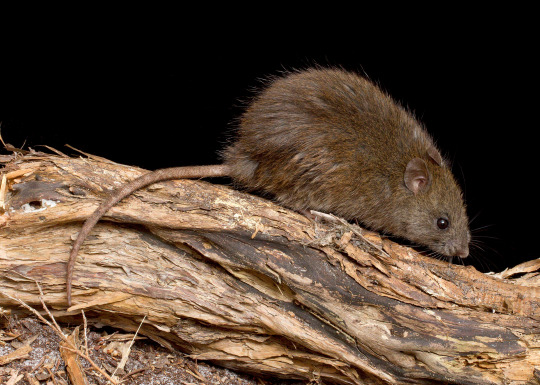
pictured: a cutie
The Project
The 250-hectare headland hasn’t always been a bush rat kingdom, though. Following a century of being vilified and exterminated from areas around Sydney Harbour, the bush rat population in North Head was wiped out decades ago by urbanization, habitat fragmentation, and predation by feral cats and foxes. The reserve was overrun by a gang of black rats, an invasive species that’s found on every continent except Antarctica. While bush rats help maintain the ecosystem’s native species, black rats wreak havoc. At North Head, they wasted no time plundering the burrows and tree hollow nests of small mammals and gorging on bird eggs, says Leo. “They were causing a lot of problems.”
But when given the chance, bush rats can be formidable ecological gatekeepers. In 2014, Leo and her team began reintroducing bush rats to North Head to drive out their intrusive counterparts. The rewilding effort is working, with annual wildlife surveys showing that black rat numbers dropped from an estimated 112 in 2019 to 29 by 2020. In May 2021, a mere nine black rats were captured. The project harnesses the bush rat’s innate territorial streak. The native rodents outcompete black rats for habitat and food, and Leo suspects that North Head will one day be a bush rat–only stomping ground. “If they’ve got the fort, they can maintain the territory,” she says.
For the reintroduction effort, Leo and her team captured 180 bush rats over three years from abundant populations in Muogamarra Nature Reserve and Ku-ring-gai Chase National Park, both located roughly 30 kilometers northwest of North Head. The researchers lured the rats into traps with a wholesome meal of oats, honey, and peanut butter, then assessed the animals’ genes to ensure they were diverse enough to build a flourishing new colony at North Head. After inserting a microchip into each rat, the team set the rodents free on the headland...
The Importance of Native Rodents
While most reintroductions focus on giving threatened species a boost, it’s just as important to prioritize common species in conservation efforts and rewilding projects, says Emily Roycroft, an evolutionary biologist specializing in native mammals and population genetics at the Australian National University. For instance, native rodents act as tiny engineers that shape the ecosystems they inhabit, spreading seeds, churning the soil, and keeping insect populations in check.
Native rodents provide fundamental ecosystem services, says Roycroft, who was not involved in Leo’s project. “We know that if [rodents] were once there, they were playing a role.”
Relocating common species like the bush rat can also provide a good dress rehearsal for riskier reintroductions, adds Roycroft. If something goes wrong when reintroducing a common species, there’s often enough time to tweak the approach and try again. But when researchers are dealing with a species that is on the brink of extinction, they only have one shot to get it right. “It might be the last chance for that particular species to establish a new population,” says Roycroft.
Leo suspects the bush rats have reclaimed their territory for good at North Head, which is now free of feral cats and foxes and protected from urban sprawl. “They’re pretty much established now,” she says. “I think they’ll continue to do well.”” -via Hakai Magazine, 1/11/23
#invasive species#native species#rodents#rats#wild rat#rewilding#reintroduction#endangered species#ecosystems#ecology#good news#hope#australia#ratblr
287 notes
·
View notes
Text
youtube
Brown bears, wolves and bison are returning to Europe! Nature and biodiversity is bouncing back!
We are in Bulgaria filming in the Rhodope mountains, one of the most biodiverse places in Europe.
We are here with the Rewilding Europe team to show you why reintroducing these animals back into these natural ecosystems is so important.
Rewilding is essential to maintaining the balance of nature, and ensuring the survival of all species.
Share this video if you want to see more rewilding efforts around the world!
You can learn more about Rewilding Europe here: https://rewildingeurope.com/
Some of the video clips in this film belong to Rewilding Europe, Rewilding Portugal and João Cosmen and Bruno D’Amicis from Central Apennines.
See more on Instagram-
/ goinggreenmedia
Join the Going Green Facebook Page-
/ ggreenmedia
Learn more about the Nick Maughan Foundation- https://nmf.org/
00:00-00:50 Intro
00:50-02:28 What is Rewilding?
02:29-07:27 Exploring With Rewilding Europe
07:28-08:15 Outro
#rewilding #bison #nature
#Going Green#solarpunk#rewilding#europe#Rewilding Europe#native species#native animals#brown bear#wolf#bison#reintroduction#Bulgaria#Rhodope mountains#Youtube
8 notes
·
View notes
Text
This is epic, I'm so excited to see how this will change things. The wolves reintroduced to Yellowstone had a massive effect. Reintroducing these keystone species is going to change up so much! And I am happy that the Blackfeet get their species back. really, there is great news. 7/7/23
3 notes
·
View notes
Text
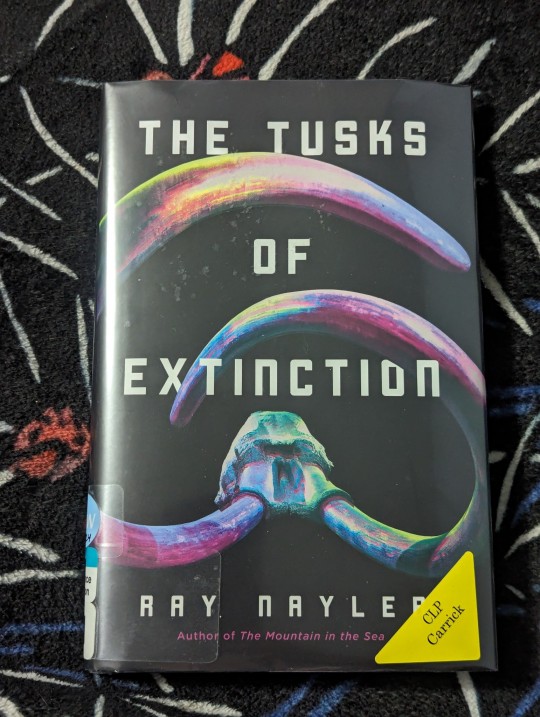
February 20, 2024:
I can't believe this almost slipped under my radar, cause this is 🔥fire🔥. It's confusing at first but after that it's quick, thought-provoking, and honestly just really cool in concept. It's brutal, but in a grounded, matter-of-fact way--fittingly, like a nature documentary.
This is not the kind of book that will satisfy a particular type of online critic. It doesn't feel the need to explain how their future tech is possible, it just works and that's all you need to know. Steer clear if you'd rather not see a forest because you're picking bark off the trees. Otherwise, this is a unique experience that I highly recommend.
9/10
#WhatsKenyaReading
#whatskenyareading#books#reading#library#mammoth#prehistoric animals#prehistoric#mammoths#elephant#elephants#conservation#endangered species#ecosystem#wildlife conservation#ecology#environment#reintroduction#extinction#extinct animals#extinct species#ivory#tusk#the tusks of extinction#tusks of extinction#poachers#poaching#hunting#future#science fiction#scifi
1 note
·
View note
Text
in an environmental sociology class and its nuts to me how little ppl understand like... basic things of nature... I'm talking like how nature that does not follow property lines or borders
#we were talking about the reintroduction of grey wolves to the Yellowstone region and how they had to be brought down from canada#and ppl were feverently arguing that these wolves are not American and invasive and not the same wolves yadda yadda#like the original wolves got eradicated but at the end of the day these are the same damn species tf you mean invasive
0 notes
Text
Decision not to focus on reintroduction of species to UK ‘absurd’ and ‘naive’ | In Trend Today
Decision not to focus on reintroduction of species to UK ‘absurd’ and ‘naive’
Read Full Text
or
Full Article on MAG NEWS

View On WordPress
#Celebrities#Decision not to focus on reintroduction of species to UK ‘absurd’ and ‘naive’#Money#Motors#Politics#ShowBiz#Sport#Tech#UK#US#World
0 notes
Text
The Hidden Problem of Outdoor Cats: Ecology of Fear
As a huge cat lover who grew up with cats and adores every part of them, outdoor cats are a problem. You’ve probably already heard this, but domestic outdoor cats are responsible for a staggering number of extinctions in local bird populations, even if someone thinks their “sweet little baby would never hunt” because the cat definitely has. But that’s old news, and I’m here to present another (probably already done) theory on why these cats cause problems, and that is a concept called “The ecology of fear.”
Ecology of Fear is a semi-recent concept coined by ecologists that talks about the indirect impact predators have on prey species. Basically, besides directly influencing prey populations by killing prey, there is a broader impact caused by just the presence of a predator that causes defensive changes in behavior. This change usually involves being much more cautious, meaning there’s more energy devoted to being alert and weary and less energy spent on growth and reproduction. There’s also less food consumed because the prey cannot spent large amounts of time in the open. So what does this mean for cats?
It means that even if your cat has less than one brain cell and doesn’t know how to hunt and is scared of grass like mine is, it doesn’t matter. Just the existence of a cat in the area causes local animals to chance their behavior, often with negative impacts for themselves. Birds and other prey species already have to deal with natural local predators, and adding the pressure of cats into the system tips the natural balance too far against the prey.
So please keep your cats indoors, both for their safety and the safety of local animals.
Sincerely,
An aspiring ecologist
(Also: if you’re interested in more details on the ecology of fear, a good documentary to watch is “Nature’s Fear Factor” on PBS. It’s about the reintroduction of wild dogs to Gorongosa Natural Park)
#cats#kittens#outdoor cats#cat lovers#ecology#biology#birds#outdoors#cats are babey but they do not belong outside#invasive species#nature
7K notes
·
View notes
Text
as much as i experience frequent environmental grief, i also honour the moments i feel such incredible joy.
recently i got to observe 3 ducklings. they’re pāteke (brown teal), and the most endangered waterfowl on the mainland of aotearoa new zealand- there’s around 2000-2500 of them in the wild.
that number is increasing yearly through breeding programmes and reintroductions, which these three little guys will be part of. they’re unassuming little things, but watching them swim along with their mother while their father sunbathed on a rock to the side, i hope they’re part of their species story of long term survival.
2K notes
·
View notes
Text
This is from last summer (I found it while trying to clean up browser tabs--oops.) Anyway, it's one of many examples of critically endangered species showing an upturn in population with support. The Devils Hole pupfish is particularly imperiled because it is only found in one flooded cavern in Nevada's Amargosa Desert; the species is likely descended from fish that were washed in there by flooding thousands of years ago, and have managed to eke out a living in the hot, oxygen-deficient water ever since.
This is one of the first species ever listed under the U.S. Endangered Species Act. Devils Hole is threatened by groundwater depletion from well drilling, and after the pupfish's ESA listing there were numerous legal battles between conservationists and farmers over water usage. Water levels reached their lowest point in the early 1970s, but have been slowly rising since then.
Scientists are excited because the current wild population (at least as of last fall) is at 263 fish. That's up from just 35 in 2013, the lowest recorded population ever. There are a few hundred more in captivity, being used to breed more young for reintroduction. The hope is that this fall's wild count will break 300, a good sign for the world's most endangered fish.
By the way, THIS is the entirety of the Devils hole pupfish's habitat, the only place in the world where they are found:
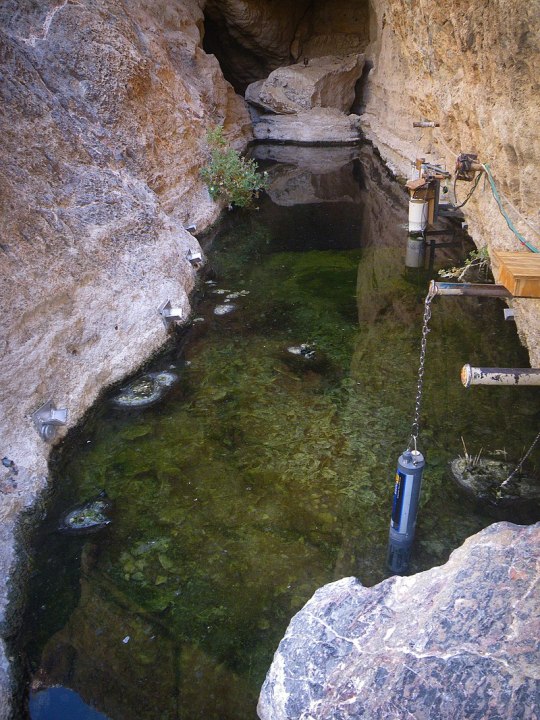
#Devils Hole pupfish#Devils Hole#fish#icthyology#vertebrates#animals#wildlife#endangered species#endangered animals#extinction#nature#ecology#environment#conservation#science#scicomm#Nevada#United States#Endangered Species Act#Endangered Species List
1K notes
·
View notes
Text
How do I connect with local spirits?
Most witches consider local spirits to be a cornerstone of their practice. It's much easier to cast a ward on your home when the local forest spirit will back it up. Ask five witches how to connect to spirits and you'll get seven answers and three arguments.
So I'm going to give you a foolproof answer.
If you live in the united states, your state will have a list of endangered and threatened species. It will also have a list of invasive species. Look through these. There's a pretty good chance that you'll be surprised and find something you've seen before. "I didn't know that was endangered! I've seen that in my grandma's backyard."
Great! You are now that species guardian angel.
Figure out how to protect it. Find out how to spread it. Then do it. It spreads from cuttings? Awesome! Take some cuttings and sprout them, then plant them somewhere.
You don't have anywhere to plant them? That's okay. Get a high-vis vest, pull over onto the side of the highway in a nice spot, plant them, and leave. No one questions the high-vis vest. Someone does? "I'm a volenteer at an endangered species reintroduction program." It's not even a lie, it's just a program of one. Hell, that program may actually exist and you may actually be able to volenteer for it.
"But how does this help me connect with local spirits?" You are actively protecting your local ecosystems that your local spirits are a reflection of. They will appreciate that far more than any other offering you can give.
#magic#witch#witchcraft#green witch#green magic#witchblr#magick#pagan#paganism#green#plants#environmentalism
677 notes
·
View notes